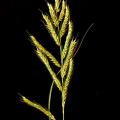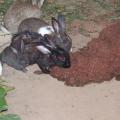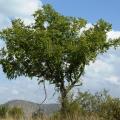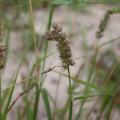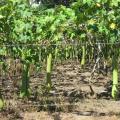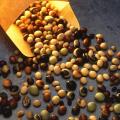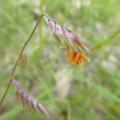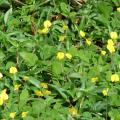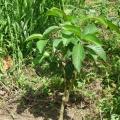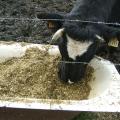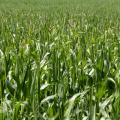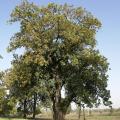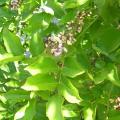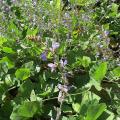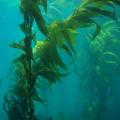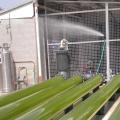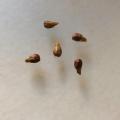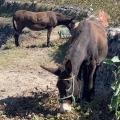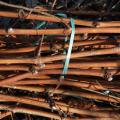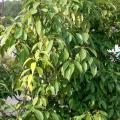Feedipedia news
The workshop Food and Feed for the Future took place in Lyon, France, on 1 September 2023. It was organized by INRAE, AFZ and CSIRO and sponsored by the OECD Co-operative Research Programme "Sustainable agricultural and food systems".
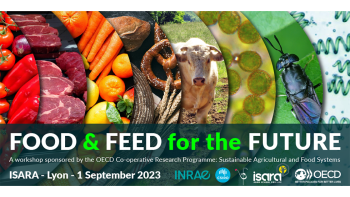
Click on the link below to download the proceedings (free)
Click on the link below to register for accessing other materials of the workshop (free for AFZ members)
Explore Feedipedia
|
Burgu (Echinochloa stagnina (Retz.) P. Beauv.) is a perennial, or sometimes... Read more |
Brewers grains are the solid residue left after the processing of germinated and dried... Read more |
The buffalo thorn (Ziziphus mucronata Willd.) is a multipurpose tree whose... Read more |
|
The Indian sandbur (Cenchrus biflorus Roxb.) is a valuable fodder plant... Read more |
Luffa (Luffa aegyptiaca Mill.) is a plant from the cucumber family, mainly grown... Read more |
Soybean (Glycine max (L.) Merr.) is the largest oilseed crop, with 276 million t... Read more |
|
Slender grama (Bouteloua repens (Kunth) Scribn.) is a pasture grass from the dry... Read more |
The rubber tree (Hevea brasiliensis) is a fast growing, medium to tall tree (25... Read more |
Pinto peanut (Arachis pintoi Krapov. & W.C. Greg.) is a perennial tropical... Read more |
|
Nacedero (Trichanthera gigantea (Humboldt & Bonpland.) Nees) is a... Read more |
Maize silage (Zea mays L.) is made out of whole ensiled maize plants. It is one... Read more |
Maize (Zea mays L.) green forage, particularly when it contains the stalks,... Read more |
|
Mahua (Madhuca longifolia (L.) J. F. Macbr.) is a multipurpose tropical tree... Read more |
Karanja (Millettia pinnata (L.) Panigrahi) is a fast-growing, multipurpose tree... Read more |
Caeruleum calopo (Calopogonium caeruleum (Benth.) C. Wright) is a climbing... Read more |
|
Algae are an heterogeneous group of plants with a complex and often controversial... Read more |
Microalgae are small-sized organisms found in fresh and saline waters, in both benthic... Read more |
Grape seeds are a by-product of the pressing of grapevine (Vitis vinifera L.)... Read more |
|
The grapevine (Vitis vinifera L.) is a vine cultivated worldwide for its edible... Read more |
The grapevine (Vitis vinifera L.) is a vine cultivated worldwide for its edible... Read more |
Blue Japanese oak (Quercus glauca Thunb.) is a medium-sized tree native... Read more |
Pages
Recent resources
The role of livestock in food security, poverty reduction and wealth creation in West Africa
- Molina-Flores et al., 2020. Food and Agriculture Organization of the United Nations Accra, 2020
Livestock is key to 377 million people in West Africa and in some countries, up to 60% of the population is involved in livestock production. The demand for animal products is increasing with population growth, urbanization, growing middle class, and due to shifting consumer preferences towards animal products. To meet this growing demand, countries in West Africa must engage in accelerated sustainable livestock production undertaking. Livestock development is key to eradicate hunger and poverty. This book attempts to provide up-to-date, and reliable information on the potentials, opportunities, and challenges of the livestock subsector in West Africa.
Pulses and their by-products as animal feed
- Sherasia et al., 2017. In: Calles, T.; Makkar, H. P. S. (Eds), FAO, Food and Agriculture Organization of the United Nations, Rome, Italy
This document provides a state-of-the-art review of the recent research (published and unpublished) on the use of pulses and their by-products as animal feed. It aims at raising awareness on the use of pulses and their by-products. It highlights the nutritional role of pulses and pulse by-products as animal feed and is a contribution to the legacy of the 2016 International Year of Pulses. This document will further enhance the use of these feed resources in other continents, besides Asia, where many pulse by-products are simply dumped. It is also expected that the synthesis presented contributes to make the use of pulses and their by-products as animal feed more efficient. This document will be useful for extension workers, researchers, feed industry, policy-makers and donors alike.
Opinion paper: A regional feed action plan – one-of-a-kind example from East Africa
- Opio et al., 2020. Animal, 1-4
Open access document. This paper puts forward a case for formulation of a regional animal feed action plan (RAFAP) and highlights its potential benefits.








